Samsung Galaxy S22 Ultra vs iPhone 13 Pro Max: which is better?
Battle of the big boys
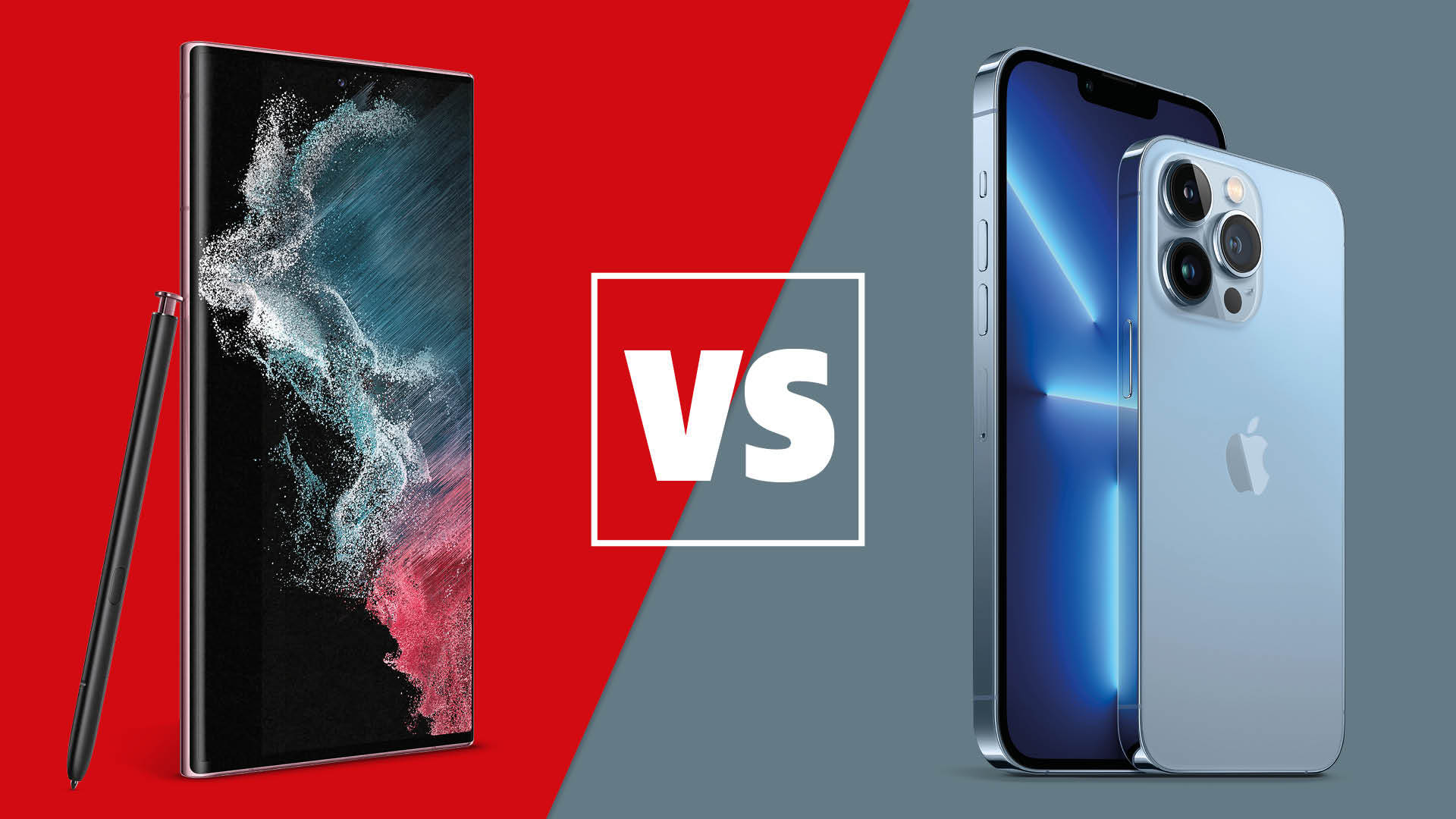
The Samsung Galaxy S22 line-up was officially announced on 9th Feb, 2022, the jewel in its crown being the Galaxy S22 Ultra – not only is it the biggest, most powerful S22 variant, it also comes with an S Pen stylus for writing and drawing on screen.
We were lucky enough to get our hands on the flagship Galaxy phone early doors for a hands-on review, but a more thorough test over several days was absolutely imperative. Does it compare favourably to the finest Apple offering, the iPhone 13 Pro Max, for example? Having now reviewed both devices in full, we can now tell you.
Once again, it's the battle of the heavyweights: Apple vs Samsung. Which flagship phone is most worthy of your hard-earned cash? Let's find out.
Samsung Galaxy S22 Ultra vs iPhone 13 Pro Max: price
Being the best of the best from the world's two biggest phone firms, neither of these handsets is what you would describe as cheap. In fact, they're quite the opposite. But if you want the best, it's going to cost you.
The iPhone 13 Pro Max launched in September with a starting price of £1049 / $1099 / AU$1849. That's for the basic 128GB capacity. If you want more storage, again, you will have to pay for it.
The 256GB model comes in at £1149 / $1199 / AU$2019, the 512GB is £1349 / $1399 / AU$2369, and the big daddy 1TB option is £1549 / $1599 / AU$2719. Ouch.
So how does the Galaxy S22 Ultra compare? Storage options and prices are broadly similar to the iPhone 13 Pro Max – there's £100 in it for the base model. The S22 Ultra is £1149 / $1199 / AU$1849 (128GB), £1249 / AU$1999 (256GB), £1329 / AU$2149 (512GB) or AU$2449 (1TB).
And just for reference, the S22 Ultra is still cheaper than the What Hi-Fi? 2021 Award-winning Android phone, the Sony Xperia 1 III (£1199 / $1300 / AU$1699)...
The Galaxy S22 smartphones were released on 25th February.
Samsung Galaxy S22 Ultra vs iPhone 13 Pro Max: design
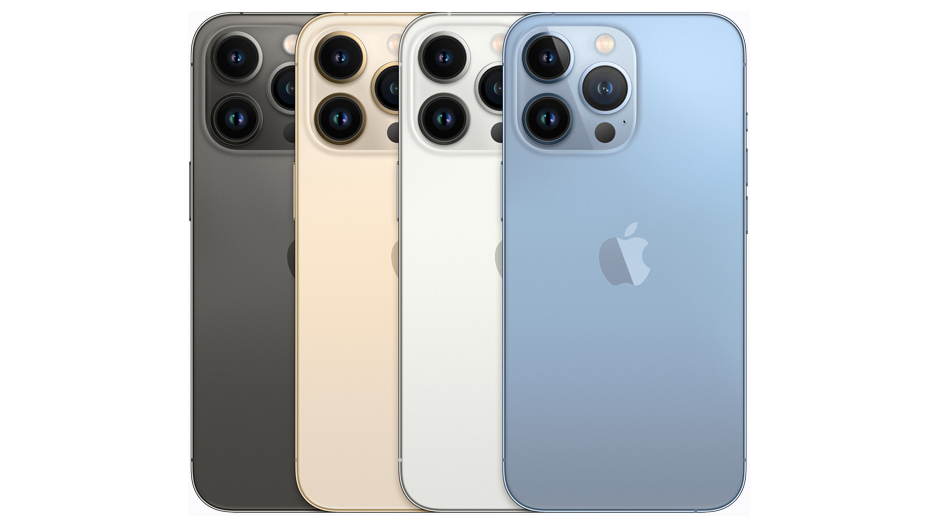
The iPhone 13 Pro Max doesn't change much from its predecessor, the iPhone 12 Pro Max. In fact, bar a 0.25mm increase in thickness, it's nigh-on identical. The camera arrangement is a little bigger, and the screen notch a little smaller, but really, it's business as usual on the design front.
That means you get the volume rocker and silent switch on the left edge, and the wake button on the right (as you look at the phone). There's also the usual Lightning connector flanked by speaker perforations on the bottom edge and SIM card slot below the volume controls.
In all, despite a lack of aesthetic innovation, it's a real beauty to look at and – more importantly – to use. It could be a little grippier, but that's soon sorted by sticking it in a case.
While the iPhone 13 Pro Max is a case of more of the same, the Samsung Galaxy S22 Ultra is all change. It continues the legacy of the now-discontinued Galaxy Note range, thanks to the addition of the S Pen stylus – housed in the casework, it pops out when pressed from the unit's underside. And that Note heritage continues in terms of design.
Like the Note phones before it, the S22 Ultra has squared-off corners, giving it a more business-like look. It's a little more formal than we're used to, but the near bezel-less screen has the feel of actually slinking around the device. The handset certainly has corners but, thanks to the curved sides, it feels comfortable rather than brick-like when held in portrait mode. Given that this is a phone geared for work as well as pleasure, it's a wise choice.
The casework is made from more durable armour aluminium for the first time plus another exclusive, Corning Gorilla Glass Victus+, on the front and back of the device, which is 12 per cent stronger than its predecessor. So even without a case, it should shrug off the odd bump and knock (though we would always recommend a case for complete protection, especially given the plethora of camera lenses on the back – more on these below).
The S22 Ultra is also one of the greenest phones Samsung has ever made – not in terms of colour (though a Green colourway is available), but in terms of eco credentials. It uses 20 per cent transformed repurposed fishing nets into polyamide resin pellets as an eco-friendly material (on the key bracket and S Pen inner cover) – the overall quality of which has been tested and is 99 per cent equivalent to that of the plastic Samsung normally uses – and we certainly cannot tell the difference. But that's not all: post-consumer materials such as CD cases and water bottles have also been used in small quantities in the phone's makeup (in the inner part of the power and volume keys, and the inner speaker module).
To go with the Green, the phone also comes in Burgundy, Phantom Black and Phantom White colour schemes.
Those well versed in using Samsung's past S Pens will happily note that this iteration still boasts neat features such as the ability to take photos by pressing the side button on the stylus, but it's also a technological step forward: the hardware for the Ultra’s S Pen has been adapted to reduce the latency as you write on the screen, from 9ms to 2.8ms. If that sounds like a massive leap in terms of performance, it really is. Using the S Pen on the S22 Ultra feels almost akin to writing on a non-digital surface and we find ourselves reaching for it often. If you've always wanted to write (rather than type) out text on your phone, it's a huge selling point.
Samsung Galaxy S22 Ultra vs iPhone 13 Pro Max: camera
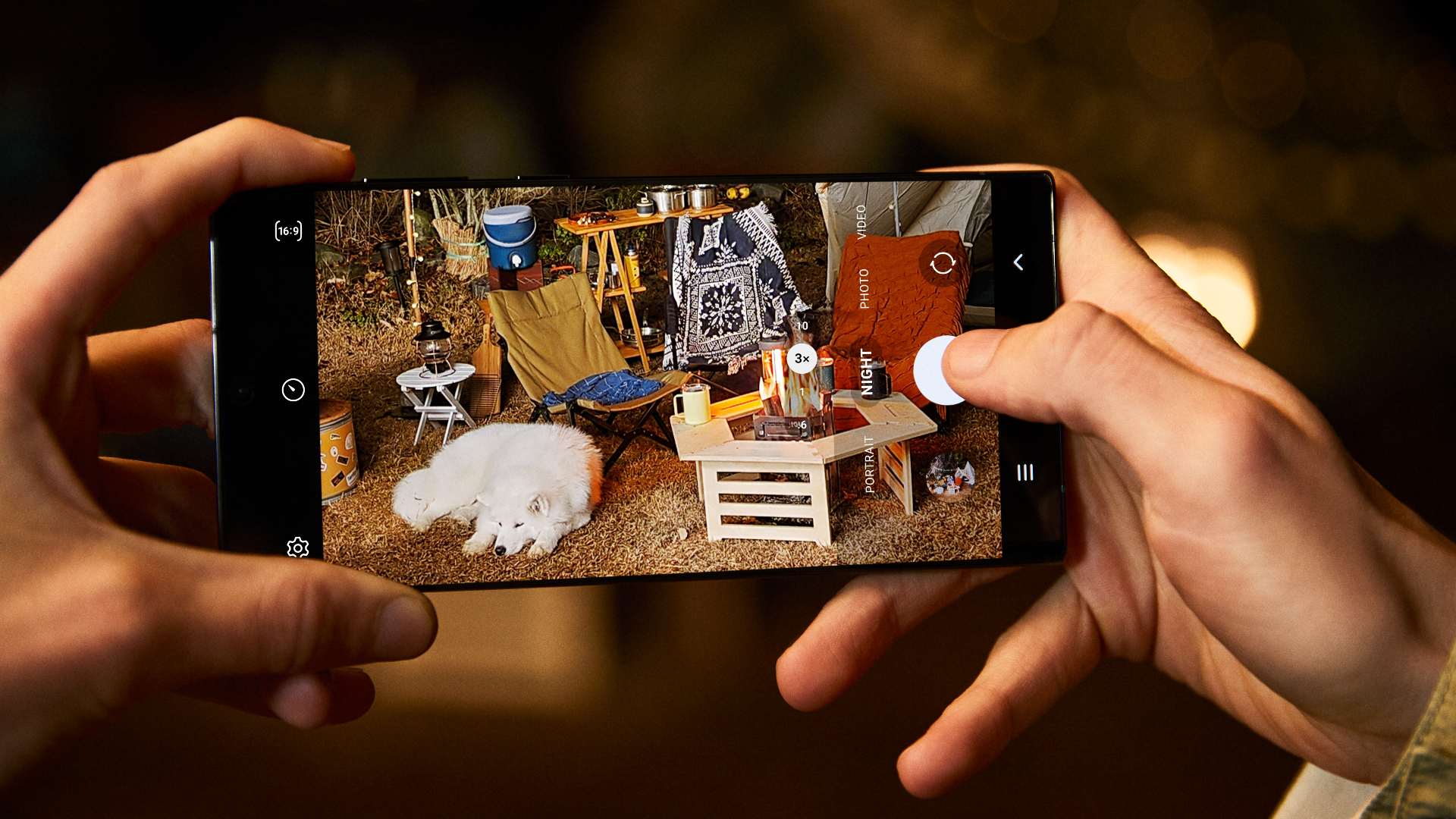
As with any high-end handset, the camera is one of the main selling points. According to Samsung, the main camera hardware on the S22 Ultra is "completely different" and includes the firm's new Adaptive Pixel Tech, allowing the capture of 108MP (Re-mosaic mode) and 12MP (Nona-binning mode) images at the same time to create a more detailed and brighter image. The dual telephoto lenses (both 10MP, one with 3x optical zoom and one with 10x) are also different to promise a crisper zoomed-in image, and the sensor is now re-engineered for optimal performance in low-lighting.
The "massive" 108MP sensor now has pixels that are 1.23 times brighter than the S21Ultra. This bigger, higher-resolution sensor, combined with Samsung's Multi-Frame Processing tech blends multi-exposure frames for seriously levelled-up night photography and actually processes four times more data to sharpen your images.
A quick glance at the back of the S22 Ultra reveals a veritable smorgasbord of lenses – take note, these protrude somewhat and mean that the smartphone does rock slightly when placed down on a surface and prodded with a finger or the S Pen. Dust or lint from a pocket does have a habit of collecting around the sharp edges of the lenses too – all the more reason to get a case.
In truth, only the 40MP front camera and the 12MP ultra-wide camera remain untouched from the older-generation S21 Ultra – but the way in which they're implemented is very different.
Now, the fan-favoured Portrait Mode. Updates introduced with S22 include AI Stereo depth map, a feature that deploys the smartphone's more sophisticated AI algorithm and AI learning to produce a striking soft-focus effect. Samsung says even single strands of hair on your head will be brought into complete focus, while backgrounds remain blurred no matter how busy they are.
New studio lighting features should also ensure better selfies. You can now pinpoint the light-source on a circle around your face, to highlight your best side, even at night (using night portrait mode, which refreshingly also works on the front camera). Influencers are going to love that.
When it comes to videography, the S22 Ultra has the same 8K @24fps highest-resolution frame rate (at 120Hz) as the S21 Ultra, but the new NPU brings plenty of new features to play. Thanks to a link-up with Snapchat, you can use a super-resolution Night Mode while in the photo-sharing app. And because the Galaxy S22 Ultra now supports AI-based Auto focus, Super Steady System and Super HDR, expect its on-device AI to work better, sharpening details and reducing noise and physical movement, especially in low light conditions. Samsung refers to it as its "best AI camera ever".
How does all of that work in practice? The S22 Ultra can detect people within five metres, and can track up to 10 people in order to automatically pan out or adjust, to keep them all in-frame. And, if you select one individual, your phone will track them, adjusting the zoom to always place them in the centre of a shot. Which should make them feel like a movie star.
It's all very impressive and certainly brings the fight to the iPhone 13 Pro Max. Like the S22 Ultra, the 13 Pro Max is aimed at those looking for pro-level results from their snaps – and it's a closely run race during our tests.
Also like the S22 Ultra, its camera system consists of Telephoto, Wide and Ultra Wide cameras, with the Ultra Wide and Wide cameras benefitting from large apertures. This allows both cameras to gather significantly more light, making for better and faster low-light photography. The Ultra Wide camera also now has auto-focus, and that allows for the sort of macro photography that wasn’t available before.
The Telephoto camera, meanwhile, has seen an increase in optical zoom from 2.5x to 3x compared to the iPhone 12 Pro Max, which adds more flexibility to portrait photography. The optical zoom of the camera system as a whole has risen from 5x to 6x, and digital zoom from 12x to 15x.
Video capture resolution can't quite match the S22 Ultra's, as it tops out at 4K@60fps, but you do get the added bonus of Dolby Vision HDR tech, along with the Cinematic mode which lets you change the depth of field while videoing. Changing focus from one person or object to another makes your flicks look much more, well, cinematic, as the name suggests. Though it's worth noting that this is limited to a maximum resolution of 1080p HD, not 4K videos.
Pro snappers will get the most out of these camera improvements on the iPhone 13 Pro Max, but us amateurs will also see the benefit. That's particularly true in low-light conditions, where the Pro Max excels.
Which is best? Well, Samsung has easily trounced the competition in terms of the S22 Ultra’s zoom capabilities. On zoom skills alone, Samsung has achieved new levels of crispness and three-dimensional clarity of objects. Of course, in 2022 a phone's ability to zoom in on a subject is hardly the whole story, but the S22 Ultra's camera system overall is also the most feature packed on a smartphone device yet; perks such as single take (to use a group of different lenses simultaneously), director’s mode, object eraser, remaster and pro mode elevate the photography performance to degrees other smartphones can only dream of.
Against the iPhone 13 Pro Max, it’s a close battle across the course of our testing – but the clarity of the Ultra’s shot, especially in low light and especially at 3x zoom, is unparalleled and for us, the colour saturation is more natural and benefits from a slightly wider colour palette.
Samsung Galaxy S22 Ultra vs iPhone 13 Pro Max: screen
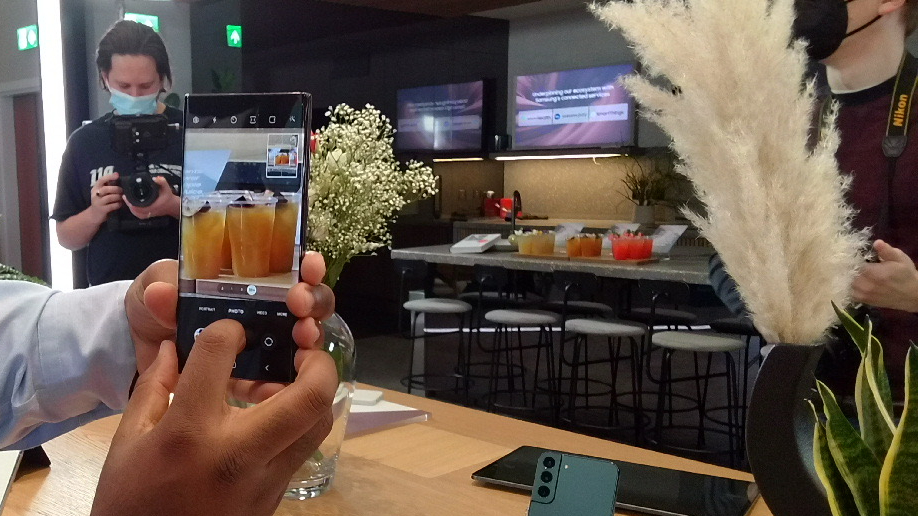
When it comes to the size of these two phones, the names say it all: Max and Ultra don't exactly scream small, do they? In terms of pure size, Samsung has the edge here – its 6.8-inch Dynamic AMOLED display just pips the iPhone 13 Pro Max's 6.7-inch Super Retina OLED screen. Dig a little deeper into its specs and the Samsung screen has the marginal upper hand in other ways, too.
The S22 Ultra has a refresh rate that maxes out at 120Hz, but can also scale all the way down to 1Hz. That dynamic scalability does make for seamless adaptability depending on what content is on-screen – a higher refresh rate for games, sports and other fast-moving content, then a much lower refresh rate for static content such as text display and emails. This greater efficiency should optimise the battery life while still reducing blurring, although dependable battery life is one area where we had to mark the S22 Ultra down...
It also has a 240Hz touch sampling rate while in Game Mode.
Add to this the Vision Booster (which optimises colour vividness regardless of brightness level), Eye Comfort Shield and a peak brightness of 1750 nits (making it the brightest screen ever to feature in a Samsung Galaxy S phone) and you've got a screen to behold.
In terms of pure specs, the iPhone 13 Pro Max can't compete on paper. Its ProMotion display also has a maximum refresh rate of 120Hz, and can scale down – but only as low as 10Hz.
Its OLED is brighter than its predecessor's, but still not a patch on Samsung's. Apple only discusses an average brightness increase (from 800 nits on the 12 Pro Max to 1000 nits) in relation to use of the phone outside – it doesn’t allude to any changes to HDR video peak brightness, which is said to be 1200 nits, as it was last year. Again, that's quite a bit lower than the S22 Ultra's 1750 nits.
However, this is purely on paper. Ask yourself this: will the average user be able to tell the difference between the S22 Ultra's low refresh rate of 1Hz and the iPhone 13 Pro Max's 10Hz? Probably not. After all, what's 9Hz between friends? In our tests, it amounted to very little and we'd consider it a draw between the titans here, both in terms of brightness and a snappy but smooth display when gaming or watching Netflix.
Samsung Galaxy S22 Ultra vs iPhone 13 Pro Max: specs and features
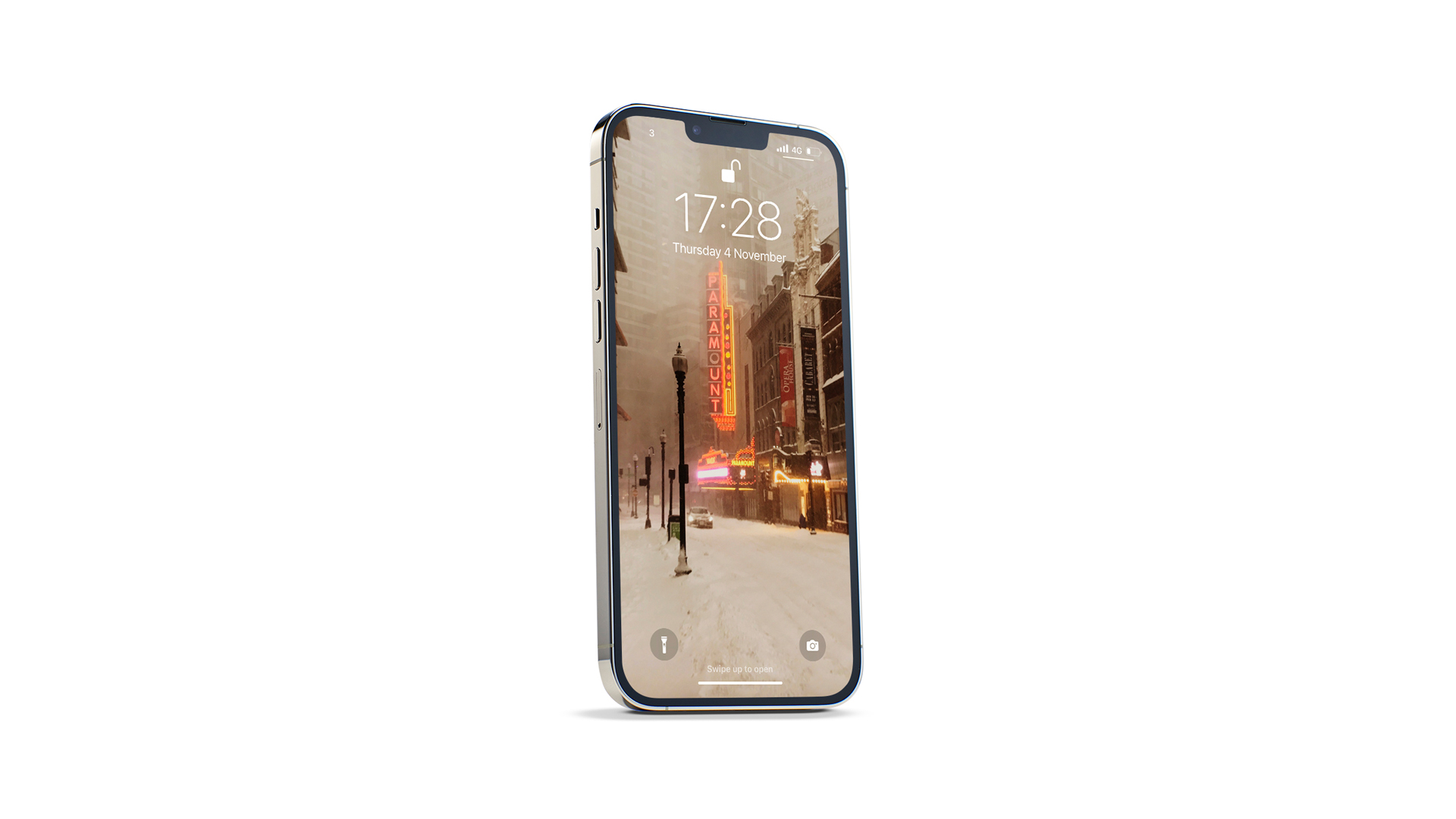
Now, the crux of the issue. What can these phones actually do? A lot, actually.
First, the S22 Ultra. As you can imagine, it's not short of power, or abilities. It's powered by a 4nm processor, the fastest processor ever on a Galaxy device. According to Samsung, the S22's operating speed is up to twice as fast as the S21's.
It also features Samsung's One UI 4, which features more options for customisation, a wider variety of emojis and GIFs, plus enhanced security and an improved privacy dashboard and Google Duo.
Key to its operation is the S Pen stylus. Its whole user experience has been overhauled to make it slicker than ever. The S Pen hardware has been adapted to reduce the latency as you write on the S22 Ultra's screen, from 9ms to 2.8ms. Writing feels much smoother and more natural, and that's because of an upgrade to Wacom's handwriting component, enhanced by an AI-based coordinate prediction technology. Basically, it is better at understanding your handwriting and can pre-empt what you're trying to write or draw with greater intelligence. There's also an advanced Handwriting to Text feature, boasting a higher recognition rate to transform your rushed scrawl into cleanly typed notes, and it now works in up to 88 languages, which is 12 more than usual. The S Pen inclusion here does not feel gimmicky – it feels embedded in the device's ecosystem and becomes a useful tool across the course of our testing.
The S22 Ultra works better than ever with other Samsung devices, thanks to its new Collaboration View. This promises seamless syncing between the Galaxy S22 Ultra and the brand new Tab S8 Series tablet. Start sketching in Samsung Notes on your Tab S8, for example, connect to you Galaxy S22 Ultra and you'll be able to change your colour palette, pen width and settings on the smartphone, thus reserving the entire tablet screen for your creation.
Samsung claims the S22 Ultra is more efficient than its predecessor, thanks to enhanced high throughput and low latency. To explain: data-heavy applications such as streaming in 4K require high throughput, while low latency is fast-becoming a more relevant indicator of performance, since it enables real-time gaming and high-definition video calls as well as setting the stage for AR/VR and edge computing.
Of course, the trade-off for low latency browsing is increased power consumption – but Samsung says it has this covered. In general, low latency services require your device's radio to be active more often and for longer, more battery-draining periods. But that's where Samsung's intelligent software algorithm comes in. In gaming, without said software your phone would need to stay active and ready for as long as you're playing the game, but the Galaxy S22 can analyse the game and power usage (ie. a shoot-out, with long periods of hiding) and make smart decisions about quick screen refreshes and fast responses. Essentially, between all of your fast-paced battles, the AI can detect small time gaps where it can 'rest' the wi-fi radio and conserve energy. With this AI-based software optimisation, Samsung claims gamers can save an average chipset power consumption of 30 per cent, without sacrificing performance. Impressive.
But here's the rub: for all its bold claims, the S22 Ultra has the same 5000mAh battery found in the S21 Ultra. It promises to charge up to 50 per cent in under 20 minutes, but despite the assertions regarding intelligent power saving, we found any increase in battery life from one generation to the next to be negligible. During testing, S22 Ultra lasted for a full day of heavy use, but no more.
Now, the iPhone 13 Pro Max, which is also pretty stacked in this department...
For starters, it's powered by Apple's A15 Bionic chip, paired with a 5-core GPU (Graphics Processing Unit) for performance that's smoother than butter. That said, it's not noticeably quicker than other high-end iPhones (or smartphones from other manufacturers, for that matter). It's only over time and with the introduction of more demanding games and other apps that the gap in performance might really be felt.
One area that does show great improvement is the battery life. The 12 Pro Max's predecessor was already capable of lasting well over a day of heavy use and, thanks to a larger battery and oodles of hardware and software efficiencies, the 13 Pro Max goes a lot further – about two and a half hours further in general use, and much longer than that with specific activities such as watching streamed videos.
On the software side, iOS 15 comes as standard, with all the features that entails. For many, it's the most user-friendly operating system out there, nicely balancing quantity of options and customisation with a simple, easy-to-use layout. The latest version, iOS 15.4, which launched on 14th March, lets users unlock their devices using Face ID while wearing a mask – although note the reported battery issue (and how to fix it).
The 13 Pro Max also supports HDR video, as well as Apple Music lossless (though not the highest Hi-Res Lossless quality) and Dolby Atmos-powered Spatial Audio for dynamic head tracking though a pair of compatible headphones.
Samsung Galaxy S22 Ultra vs iPhone 13 Pro Max: verdict
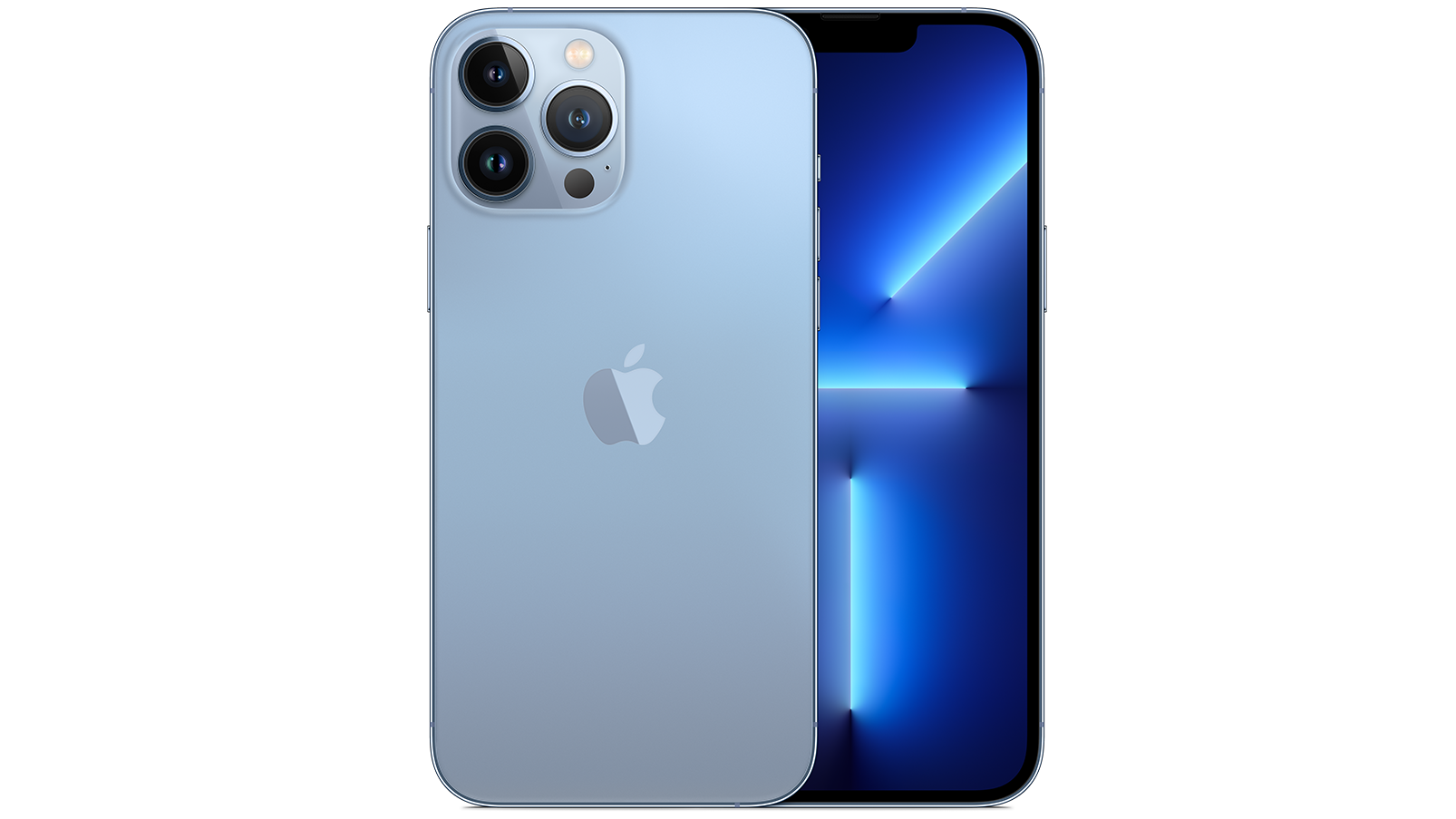
So there you have it. Two flagship phones, two mighty fine slabs of 5G mobile joy, two absolute powerhouses from the giants of the phone world. But which is most worthy of a place in your bag – and ultimately, your life?
It's really a question of personal preference. If you want to write and draw on screen, the S22 Ultra is for you. The S Pen stylus slot is a great addition, keeping the pen with you whenever you need it – and the user experience feels deeply embedded thanks to Samsung's updated apps and software. The phone also features Samsung's most advanced camera features to date, with a heavy focus on low-light performance, as well as the ability to save 16-bit RAW files for editing.
The S22 Ultra's remarkable photography features present the most compelling case yet for abandoning the Apple cart yet – and although we hope that Samsung is fiercely working away behind the scenes to glean a little more stamina out of the battery pack (or feature a completely new one next time around), for overall performance, the Android realm certainly has a new frontrunner.
But if you prefer Apple's walled garden then the 13 Pro Max is a no-brainer. It's big, bright, powerful and a worthy entrant on our list of best smartphones. The top tier iPhone's audio chops also edge those offered by the flagship Galaxy device overall. Samsung S22 Ultra’s dual-firing speakers (which boast support for Dolby Atmos) offer a meatier and more spacious soundstage than the competition, but when using headphones the iPhone wins in terms of clarity, timing and musical cohesion. That’s not to say the performance is poor from the S22 Ultra (it is still solid and meaty), it just doesn’t hang together quite as well and our music suffers just a little in terms of impetus, drive and energy as a result.
Apple fans will need no further convincing – and even long-term iPhone devotees may be surprised to learn that the newest flagship iOS device wins in terms of battery life...
MORE:
See our pick of the best smartphones 2022: the best phones for music and movies
And these are the best Android phones 2022: Google-powered smartphones for all budgets
Read our extensive back catalogue of Samsung reviews
Get the What Hi-Fi? Newsletter
The latest hi-fi, home cinema and tech news, reviews, buying advice and deals, direct to your inbox.
Joe has been writing about tech for 20 years, first on staff at T3 magazine, then in a freelance capacity for Stuff, The Sunday Times Travel Magazine (now defunct), Men's Health, GQ, The Mirror, Trusted Reviews, TechRadar and many more. His specialities include all things mobile, headphones and speakers that he can't justifying spending money on.

